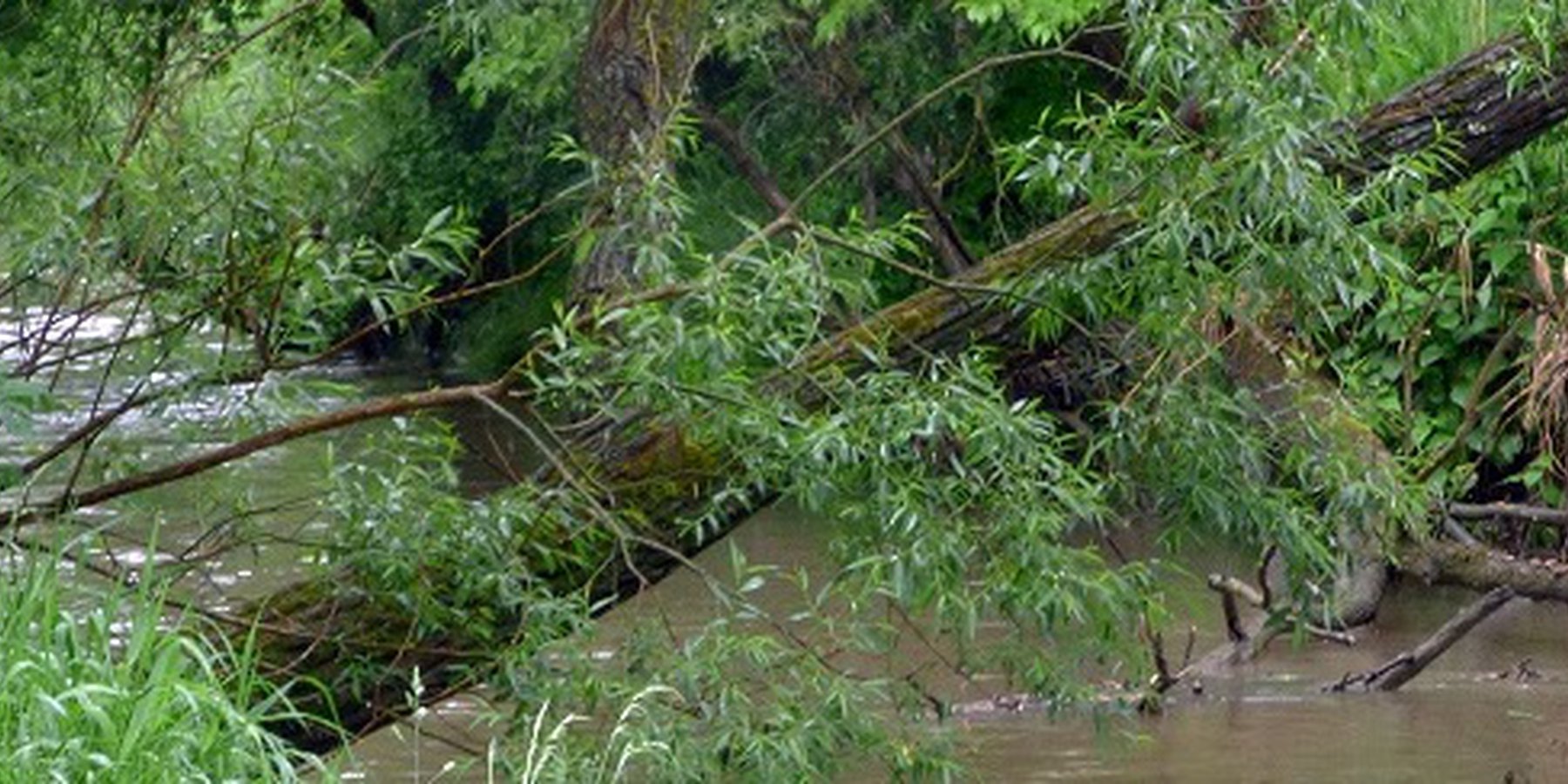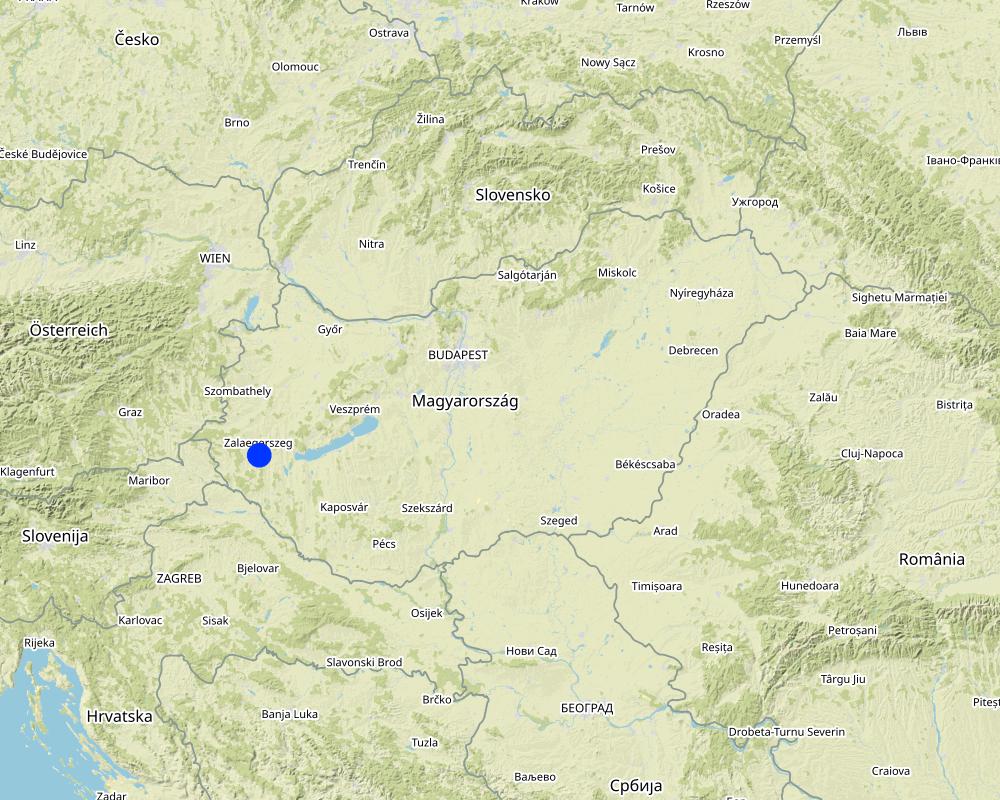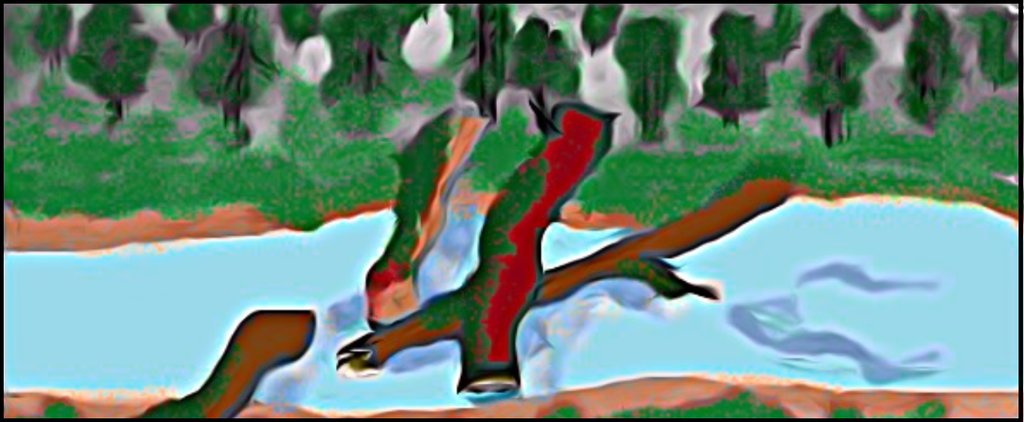Coarse woody debris to slow streamflow [Hungary]
- Creation:
- Update:
- Compiler: Brigitta Szabó
- Editors: Piroska Kassai, Zoltan Toth
- Reviewers: William Critchley, Rima Mekdaschi Studer
Durva fatörmelék
technologies_6197 - Hungary
View sections
Expand all Collapse all1. General information
1.2 Contact details of resource persons and institutions involved in the assessment and documentation of the Technology
Name of project which facilitated the documentation/ evaluation of the Technology (if relevant)
OPtimal strategies to retAIN and re-use water and nutrients in small agricultural catchments across different soil-climatic regions in Europe (OPTAIN)Name of the institution(s) which facilitated the documentation/ evaluation of the Technology (if relevant)
Institute for Soil Sciences, Centre for Agricultural Research (ATK TAKI) - Hungary1.3 Conditions regarding the use of data documented through WOCAT
The compiler and key resource person(s) accept the conditions regarding the use of data documented through WOCAT:
Yes
1.4 Declaration on sustainability of the described Technology
Is the Technology described here problematic with regard to land degradation, so that it cannot be declared a sustainable land management technology?
No
2. Description of the SLM Technology
2.1 Short description of the Technology
Definition of the Technology:
Accumulating coarse woody debris in stream beds reduces flow velocity and levels of flood peaks. As a consequence the speed and energy of water flow is reduced, allowing greater deposition of sediments. In addition the technology has ecological advantages.
2.2 Detailed description of the Technology
Description:
Allowing the accumulation of coarse woody debris in streambeds reduces flow velocity and levels of peak floods. This technology is applied in sloping landscapes, where runoff flows into streams/ gullies. The main function is to break the energy and reduce the speed of flow. Riparian trees or their branches are allowed to fall naturally into streams – through deliberate placement of wooden debris can contribute to the process. This may even create dams on steeper sections of the watercourses. Sediment loss will be reduced from the catchment area by deposition (sedimentation) of soil particles along the watercourses and on the plains lower in the valleys. In addition, slowing the flow results in a larger surface area of water and infiltration is increased. Wet spots created this way improve aquatic biodiversity and wildlife. A downstream benefit is that land users at a lower elevation are less affected by runoff, floods and sediment deposition. However a disadvantage is the risk of damage to surrounding fields - caused by wild animals attracted to the wet conditions and increased biodiversity.
2.3 Photos of the Technology
2.4 Videos of the Technology
Comments, short description:
No video available
Location:
-
Name of videographer:
-
2.5 Country/ region/ locations where the Technology has been applied and which are covered by this assessment
Country:
Hungary
Region/ State/ Province:
Zala County
Further specification of location:
The site where the technology is applied is situated within the catchment of Felső-Válicka stream, which belongs to the Balaton catchment area in western Hungary.
Specify the spread of the Technology:
- applied at specific points/ concentrated on a small area
Is/are the technology site(s) located in a permanently protected area?
No
Map
×2.6 Date of implementation
If precise year is not known, indicate approximate date:
- more than 50 years ago (traditional)
2.7 Introduction of the Technology
Specify how the Technology was introduced:
- as part of a traditional system (> 50 years)
3. Classification of the SLM Technology
3.1 Main purpose(s) of the Technology
- reduce, prevent, restore land degradation
- conserve ecosystem
- protect a watershed/ downstream areas – in combination with other Technologies
- preserve/ improve biodiversity
- reduce risk of disasters
3.2 Current land use type(s) where the Technology is applied
Land use mixed within the same land unit:
No

Waterways, waterbodies, wetlands
- Drainage lines, waterways
3.3 Has land use changed due to the implementation of the Technology?
Has land use changed due to the implementation of the Technology?
- No (Continue with question 3.4)
3.4 Water supply
Water supply for the land on which the Technology is applied:
- rainfed
3.5 SLM group to which the Technology belongs
- natural and semi-natural forest management
- surface water management (spring, river, lakes, sea)
3.6 SLM measures comprising the Technology

vegetative measures
- V1: Tree and shrub cover
3.7 Main types of land degradation addressed by the Technology

soil erosion by water
- Wt: loss of topsoil/ surface erosion
- Wg: gully erosion/ gullying
- Wr: riverbank erosion
- Wo: offsite degradation effects

water degradation
- Hs: change in quantity of surface water
3.8 Prevention, reduction, or restoration of land degradation
Specify the goal of the Technology with regard to land degradation:
- prevent land degradation
4. Technical specifications, implementation activities, inputs, and costs
4.1 Technical drawing of the Technology
Technical specifications (related to technical drawing):
Coarse woody debris (CWD) can be a feature in any water course but will probably have the highest water retention and biodiversity benefits in forest headwater streams. There are no space requirements for this measure and there are no site or slope stability limitations. Riparian forest buffers are natural inputs for this measure: when the trees in the riparian area fall into the stream, they will immediately become coarse woody debris
Author:
Piroska Kassai
Date:
13/03/2023
4.2 General information regarding the calculation of inputs and costs
Specify how costs and inputs were calculated:
- per Technology unit
Specify unit:
watercourse
Specify currency used for cost calculations:
- USD
Indicate average wage cost of hired labour per day:
35
4.3 Establishment activities
| Activity | Timing (season) | |
|---|---|---|
| 1. | No activity needed, the technology is a fully natural process |
4.5 Maintenance/ recurrent activities
| Activity | Timing/ frequency | |
|---|---|---|
| 1. | Cleaning (debris caught up behind the structure) | yearly |
4.6 Costs and inputs needed for maintenance/ recurrent activities (per year)
| Specify input | Unit | Quantity | Costs per Unit | Total costs per input | % of costs borne by land users | |
|---|---|---|---|---|---|---|
| Labour | Cleaning (debris caught up behind the structure) | watercourse | 1.0 | 50.0 | 50.0 | 100.0 |
| Total costs for maintenance of the Technology | 50.0 | |||||
| Total costs for maintenance of the Technology in USD | 50.0 | |||||
4.7 Most important factors affecting the costs
Describe the most determinate factors affecting the costs:
-
5. Natural and human environment
5.1 Climate
Annual rainfall
- < 250 mm
- 251-500 mm
- 501-750 mm
- 751-1,000 mm
- 1,001-1,500 mm
- 1,501-2,000 mm
- 2,001-3,000 mm
- 3,001-4,000 mm
- > 4,000 mm
Specify average annual rainfall (if known), in mm:
725.00
Agro-climatic zone
- sub-humid
5.2 Topography
Slopes on average:
- flat (0-2%)
- gentle (3-5%)
- moderate (6-10%)
- rolling (11-15%)
- hilly (16-30%)
- steep (31-60%)
- very steep (>60%)
Landforms:
- plateau/plains
- ridges
- mountain slopes
- hill slopes
- footslopes
- valley floors
Altitudinal zone:
- 0-100 m a.s.l.
- 101-500 m a.s.l.
- 501-1,000 m a.s.l.
- 1,001-1,500 m a.s.l.
- 1,501-2,000 m a.s.l.
- 2,001-2,500 m a.s.l.
- 2,501-3,000 m a.s.l.
- 3,001-4,000 m a.s.l.
- > 4,000 m a.s.l.
Indicate if the Technology is specifically applied in:
- concave situations
5.3 Soils
Soil depth on average:
- very shallow (0-20 cm)
- shallow (21-50 cm)
- moderately deep (51-80 cm)
- deep (81-120 cm)
- very deep (> 120 cm)
Soil texture (topsoil):
- medium (loamy, silty)
- fine/ heavy (clay)
Soil texture (> 20 cm below surface):
- medium (loamy, silty)
- fine/ heavy (clay)
Topsoil organic matter:
- medium (1-3%)
5.4 Water availability and quality
Ground water table:
< 5 m
Availability of surface water:
good
Water quality (untreated):
poor drinking water (treatment required)
Water quality refers to:
surface water
Is water salinity a problem?
No
Is flooding of the area occurring?
No
5.5 Biodiversity
Species diversity:
- high
Habitat diversity:
- high
5.6 Characteristics of land users applying the Technology
Sedentary or nomadic:
- Sedentary
Market orientation of production system:
- commercial/ market
Off-farm income:
- 10-50% of all income
Relative level of wealth:
- rich
Individuals or groups:
- individual/ household
Level of mechanization:
- mechanized/ motorized
Gender:
- men
Age of land users:
- elderly
5.7 Average area of land used by land users applying the Technology
- < 0.5 ha
- 0.5-1 ha
- 1-2 ha
- 2-5 ha
- 5-15 ha
- 15-50 ha
- 50-100 ha
- 100-500 ha
- 500-1,000 ha
- 1,000-10,000 ha
- > 10,000 ha
Is this considered small-, medium- or large-scale (referring to local context)?
- large-scale
5.8 Land ownership, land use rights, and water use rights
Land ownership:
- individual, not titled
Land use rights:
- leased
- individual
Water use rights:
- communal (organized)
Are land use rights based on a traditional legal system?
Yes
5.9 Access to services and infrastructure
health:
- poor
- moderate
- good
education:
- poor
- moderate
- good
technical assistance:
- poor
- moderate
- good
employment (e.g. off-farm):
- poor
- moderate
- good
markets:
- poor
- moderate
- good
energy:
- poor
- moderate
- good
roads and transport:
- poor
- moderate
- good
drinking water and sanitation:
- poor
- moderate
- good
financial services:
- poor
- moderate
- good
6. Impacts and concluding statements
6.1 On-site impacts the Technology has shown
Socio-economic impacts
Water availability and quality
irrigation water availability
Ecological impacts
Water cycle/ runoff
harvesting/ collection of water
Comments/ specify:
Woody debris slows the water during high flows. It does not collect water in a specific place, just keeps it longer in the upper area of the watershed.
surface runoff
Comments/ specify:
Since the water moves more slowly, the rate of runoff also decreases.
Biodiversity: vegetation, animals
animal diversity
habitat diversity
Comments/ specify:
Natural dams provide a new habitat for water wildlife.
Climate and disaster risk reduction
flood impacts
drought impacts
impacts of cyclones, rain storms
Comments/ specify:
Fallen trees are the basis of natural dams, they are no longer destroyed by storms, and new dams can be built from the newly fallen trees.
emission of carbon and greenhouse gases
wind velocity
micro-climate
Comments/ specify:
The natural dams can increase humidity in the forest.
6.2 Off-site impacts the Technology has shown
water availability
Comments/ specify:
As water is coming slower from the watershead upper part, water availability is much more balanced
reliable and stable stream flows in dry season
downstream flooding
buffering/ filtering capacity
Comments/ specify:
Natural dams play a filtering role in the forest. Waste and debris must be regularly cleaned behind the structures.
damage on public/ private infrastructure
6.3 Exposure and sensitivity of the Technology to gradual climate change and climate-related extremes/ disasters (as perceived by land users)
Gradual climate change
Gradual climate change
| Season | increase or decrease | How does the Technology cope with it? | |
|---|---|---|---|
| annual temperature | increase | well | |
| seasonal temperature | summer | increase | well |
| seasonal rainfall | summer | decrease | moderately |
Climate-related extremes (disasters)
Climatological disasters
| How does the Technology cope with it? | |
|---|---|
| heatwave | moderately |
| drought | moderately |
| forest fire | not well |
Hydrological disasters
| How does the Technology cope with it? | |
|---|---|
| general (river) flood | moderately |
6.4 Cost-benefit analysis
How do the benefits compare with the establishment costs (from land users’ perspective)?
Short-term returns:
positive
Long-term returns:
positive
How do the benefits compare with the maintenance/ recurrent costs (from land users' perspective)?
Short-term returns:
positive
Long-term returns:
positive
6.5 Adoption of the Technology
- 1-10%
Of all those who have adopted the Technology, how many did so spontaneously, i.e. without receiving any material incentives/ payments?
- 91-100%
6.6 Adaptation
Has the Technology been modified recently to adapt to changing conditions?
No
6.7 Strengths/ advantages/ opportunities of the Technology
| Strengths/ advantages/ opportunities in the land user’s view |
|---|
| Land users having fields in the sloping area at a lower elevation are not affected by runoff water, floods and sediment deposition as much as without the technology. |
| Strengths/ advantages/ opportunities in the compiler’s or other key resource person’s view |
|---|
| Sediment transport will be reduced from the area reducing in smaller deposition (sedimentation) of soil particles at the valleys or in the municipalities. |
| The retention of water results in larger area covered by water. Wet spots created this way improve aquatic biodiversity and wildlife. |
6.8 Weaknesses/ disadvantages/ risks of the Technology and ways of overcoming them
| Weaknesses/ disadvantages/ risks in the land user’s view | How can they be overcome? |
|---|---|
| The risk of damage caused by wild animals in the surrounding arable fields are higher. |
| Weaknesses/ disadvantages/ risks in the compiler’s or other key resource person’s view | How can they be overcome? |
|---|---|
| The goal of water management can be to improve fast downward flow in the stream which is an opposite process than the result of coarse woody debris. |
7. References and links
7.1 Methods/ sources of information
- field visits, field surveys
1
- interviews with SLM specialists/ experts
1
- compilation from reports and other existing documentation
1
When were the data compiled (in the field)?
19/05/2021
7.2 References to available publications
Title, author, year, ISBN:
Harmon M.E. et al. 1986. Ecology of coarse woody debris in temperate ecosystems. Advances in Ecological Research 15: 133-276
7.3 Links to relevant online information
Title/ description:
EUROPEAN NWRM PLATFORM
URL:
http://nwrm.eu/
7.4 General comments
-
Links and modules
Expand all Collapse allLinks
No links
Modules
No modules






